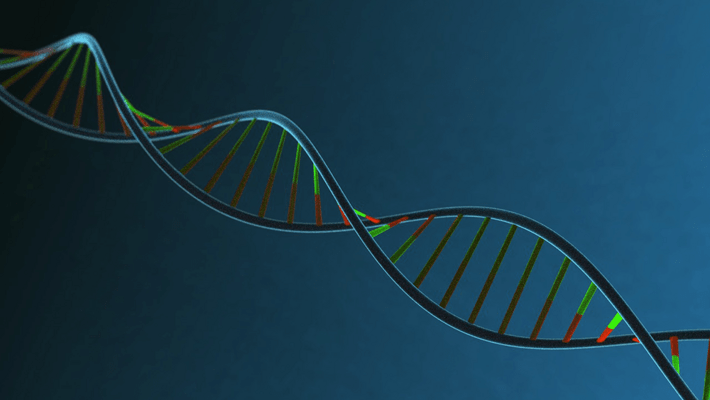
Do Genetics Influence How We Get High?
Published on 3/19/21
Most people who use weed know that cannabis affects everyone differently. The strain or edible consumed might be the same, but experiences and reactions to the cannabinoids in the marijuana will differ from person to person. This is primarily because of how influential cannabinoids like tetrahydrocannabinol (THC), cannabidiol (CBD), tetrahydrocannabivarin (THCV) and Cannabinol (CBN) link with the body's endocannabinoid system (ECS).
Cannabis and the Endocannabinoid System
 Pixabay
PixabayThe ECS is the key gateway that allows the cannabinoids in weed to do their work. It is an expansive and multifaceted network that has a massive influence on the body's physiological function and response. It is the link between our brain and body; it connects the immune system, nervous system and organs through a series of receptors found throughout the body to the brain. Pain perception, energy, appetite, mood and other cognitive functions are all integrated into the receptors of the ECS. These receptors are located in the brain and nerves, as well as in the vital organs, immune cells, skin, gastrointestinal tract, bones and skeletal muscle. When cannabis or a cannabis product enters the body, the cannabinoids merge into the bloodstream and begin a trip around the body and into the brain. They then link with and activate special neurons that in turn produce changes across the entire neurological system.
ECS Receptors
Within the ECS there are two very important cannabinoid receptors known as CB1 and CB2. CB1 receptors sit in the body's central nervous system that includes the brain, lungs, liver and kidneys. They regulate things like pain, nausea and depression. THC binds with CB1 receptors because they have a very similar molecule structure. Conversely, CB2 receptors are located in the peripheral nervous system. This is made up of the nerves that signal extremities, the immune system, spleen and gastrointestinal system. CB2 receptors can regulate and alter things like pain management, inflammation and appetite. CBD and the endocannabinoid 2-AG commonly bond with CB2 receptors.
Genetic Differences Within the ECS
Everyone has an endocannabinoid system, but each person's is unique. CB1 and CB2 receptors are like fingerprints. They express themselves differently from individual to individual. The amount and location of the receptors are different across the human race, and that is why such a wide variety of responses can generate between cannabis products or cannabis strains. Even a controlled test in a laboratory utilizing an established product with a defined lineage will produce effects that vary across the testing group depending on how their particular cannabinoid system is composed. Each person on the planet has a different level at which their receptors can be considered to be balanced. Different receptors mean different experiences even if the exact same type of weed or weed product is consumed.
Is it Possible to be Immune to Weed?
 Unsplash
UnsplashIf we dig a bit deeper into those CB1 and CB2 receptor sites, it becomes clear that it is possible to be immune to some of the effects of marijuana. Those receptors are basically proteins that develop from cells in the body. Proteins in the body are developed using our DNA. We know that the human genome is very similar across the human race, but there are mutations that are random or inherited that are not uncommon. Scientists study these mutations because they are commonly related to diseases passed down between generations, but they can also be indicators that account for the differences in the cannabis experience.
How We Get High: Genetic Mutations Outside the Endocannabinoid System
It is worth noting that while the ECS is the main component in terms of how cannabinoids are processed in the human body, there are other genes known to mutate that can also influence how the body reacts to cannabis intake. The AKT gene regulates cell survival and metabolism. Individuals with mutations in this gene have been shown to be more likely to have problems making decisions, coordinating gross motor responses and experience psychotic disorders after consuming cannabis.
Another important way in which genetics can determine how we get high is revealed upon oral cannabis consumption. When cannabis is ingested orally, it first enters the digestive system and liver. The liver is an intricate organ that is filled with enzymes and proteins that act in accordance (similar to the ECS) with individual DNA coding. One of the more prominent enzymes in the liver is able to convert what we would call the standard delta-9-THC into 11-hydroxy-THC. This type of THC is more potent at activating the CB1 receptor than delta-9-THC and if the conversion is made, the consumer of the cannabis will experience a much more intensified high.
Additionally, cannabis allergies do exist. The way that a weed allergy manifests itself varies on the way someone consumes it. Touching the plant can result in rashes, hives or swelling, while inhaling marijuana can result in nasal or eye allergy symptoms. In more extreme cases, asthma with wheezing and shortness of breath have occurred with use or even anaphylaxis.
Do you have a story about the way your genetics affect your high? Share it in the comments below!
